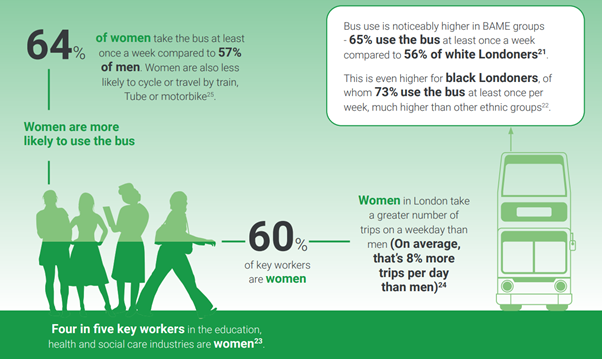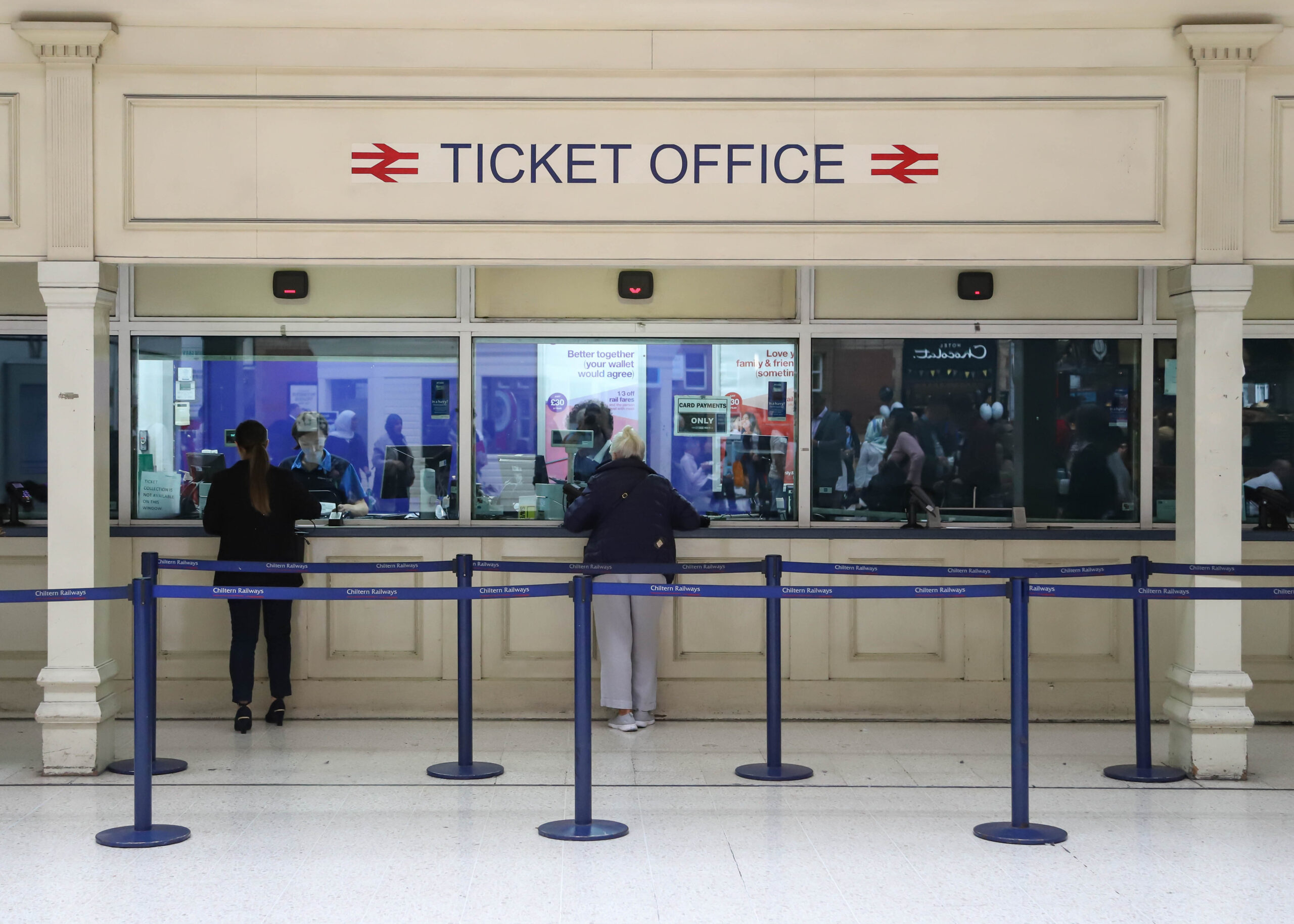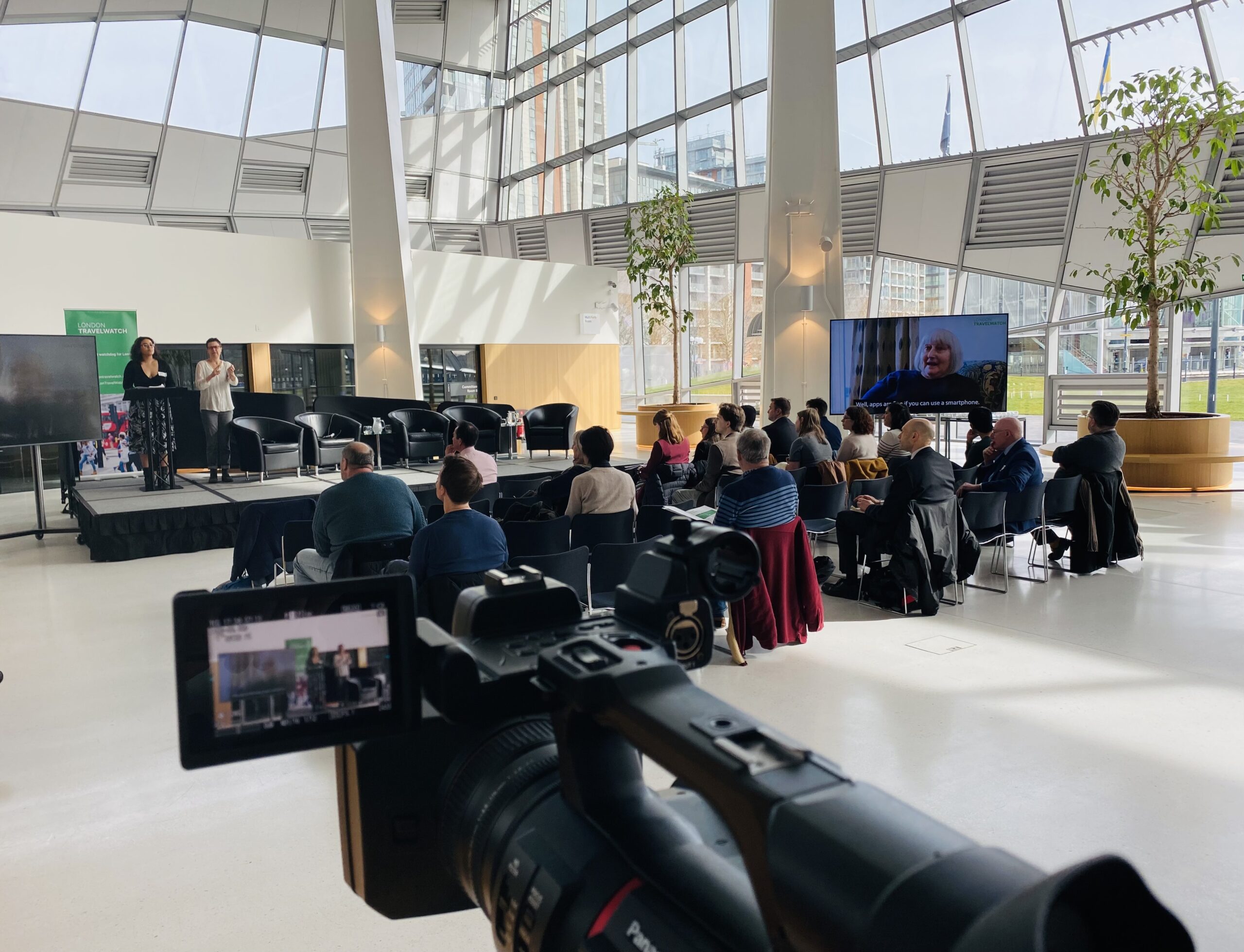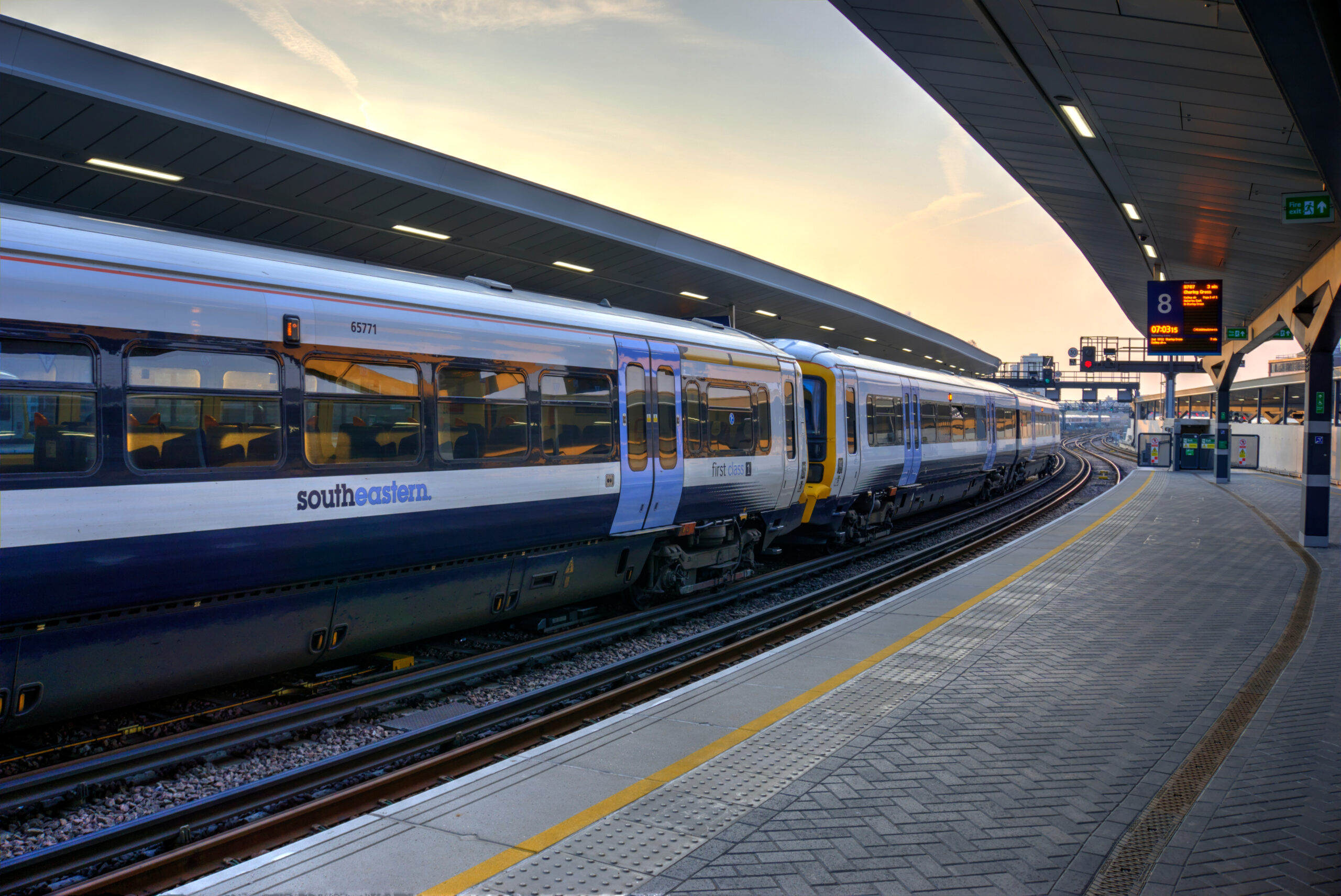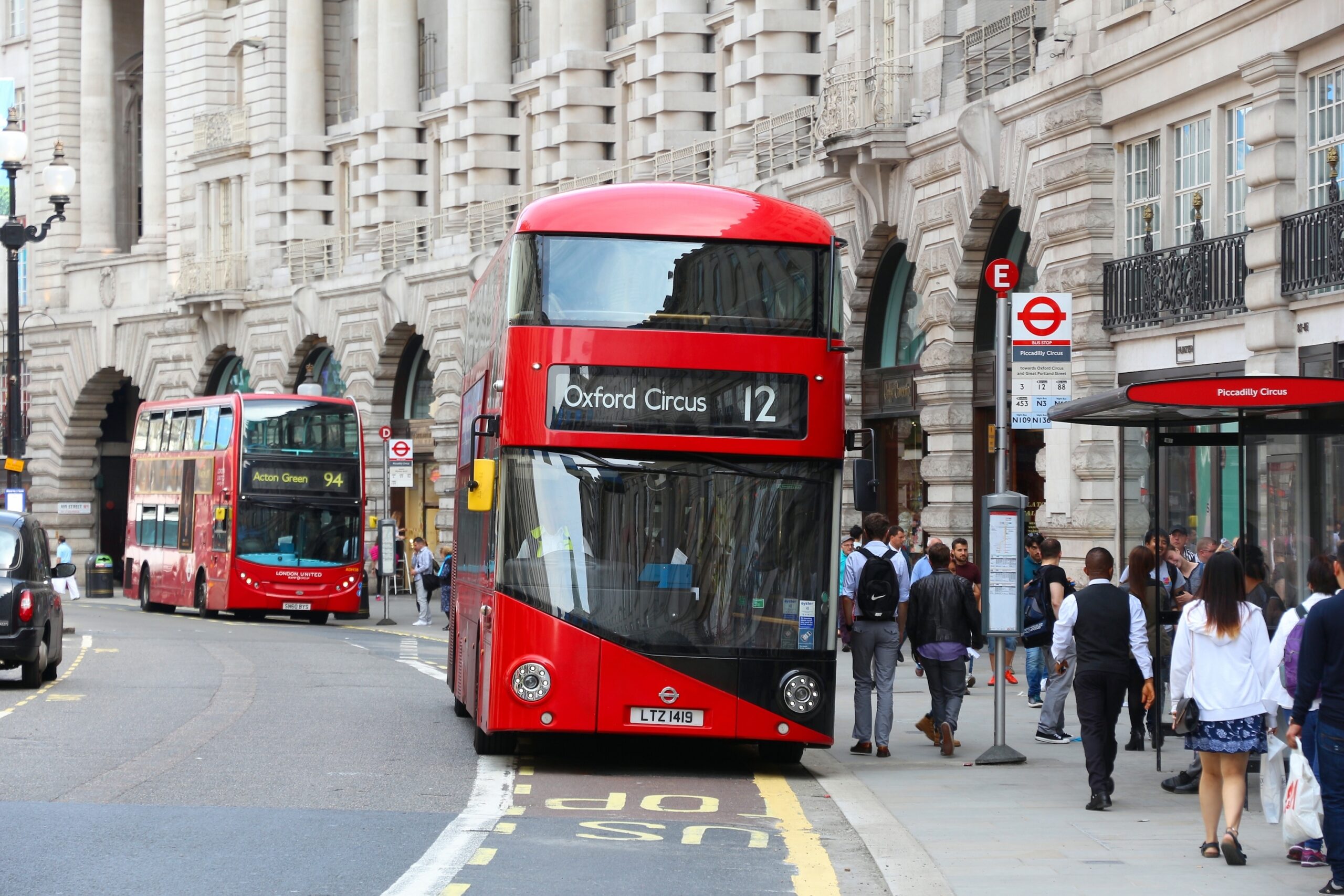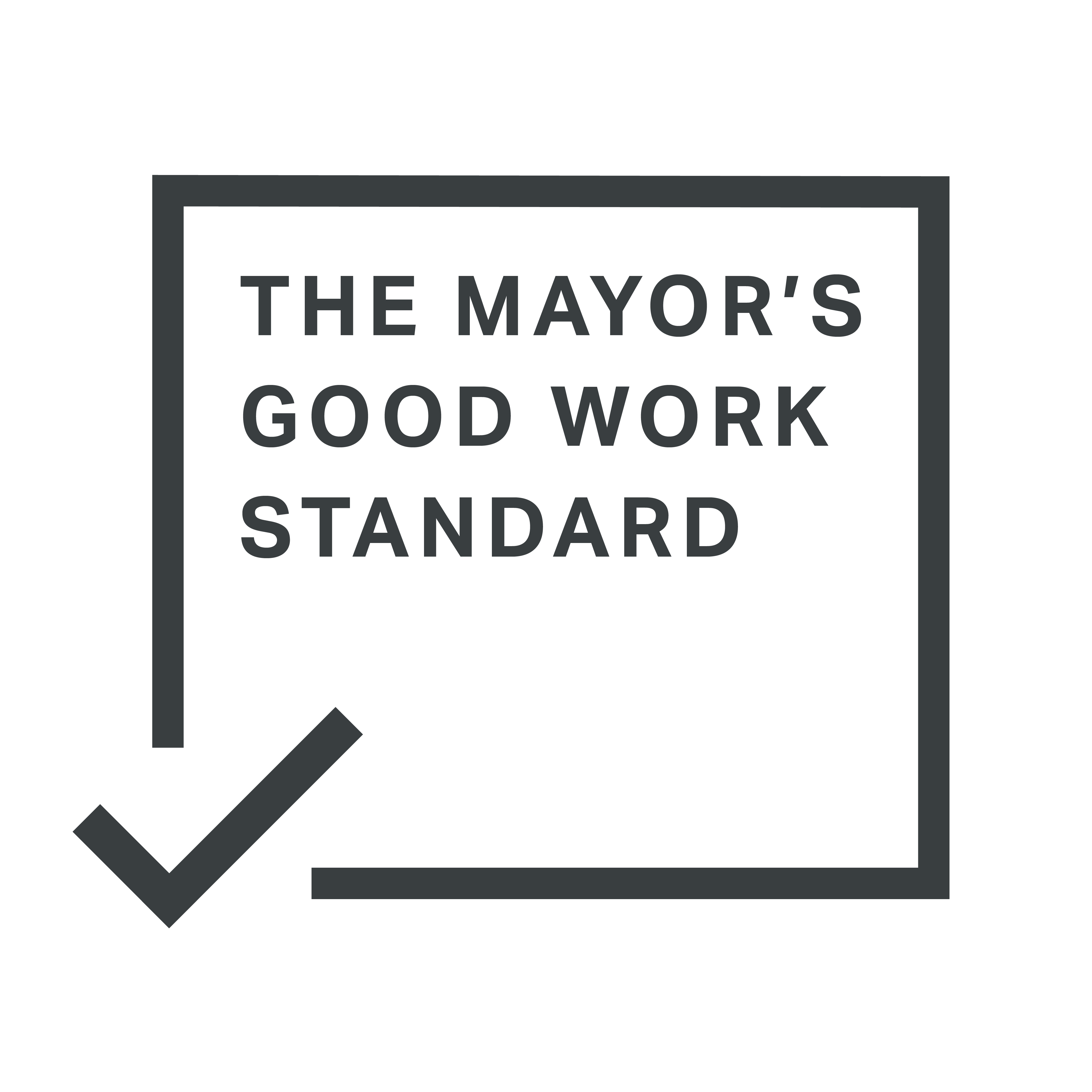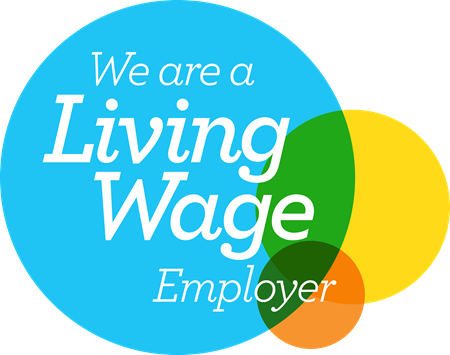18 March 2021
To mark International Women’s Day, I wanted to think about what it’s like to be a woman using the transport network in London, and what decision-makers and policy-makers can do better in future to make to women and other marginalised groups* feel safer when travelling.
One of the key takeaways of our recent report was to recognise that the experiences and views of London’s transport users will differ greatly depending on many factors. This could be influenced by things like when people travel, the purpose of a journey, the cost, speed and comfort.
It’s also about choice. Many transport users are a captive market who can’t choose when or how they travel, owing to limited options or accessibility, or time constraints such as fixed work hours. Perhaps they need to choose cheaper modes due to financial reasons, opting to walk or take the bus rather than the Tube or train to save money. These things can impact the type of journeys we take. We know women, for example, are more likely to make lots of trips, more likely to use the bus than men, and more likely to be concerned about their personal safety and security when travelling.
Many women who travel in London, myself included, feel empowered and confident using the public transport network most of the time. But that comes with caveats.
I don’t drive, and rely on public transport, walking and occasionally lifts from friends and family to get around day-to-day. If I’m out late, I’ll often get an Uber home. Careful moderation of my own behaviour and planning journeys ahead of time has been part of my experience of transport in London since I was old enough to get around on my own.
For me, that’s avoiding sitting in near-empty carriages on trains, keeping one earphone out on my walk home or pretending not to hear when someone calls out from their van something I’d rather not hear when I’m crossing the road. I’ve had a few unpleasant experiences due to being a woman that unfortunately are not unique to me and which many other women have also encountered.
This is my experience, and the experiences of other women will be different. Intersectionality and privilege matter here: I, for example, am non-disabled so will not face barriers to accessing the transport network that a disabled woman may face. And while I am mixed-race, I am white-passing and haven’t faced racism when travelling on public transport.
Experiences will be shaped by things like race, age, sexual orientation and disability: all characteristics that could make you visibly or non-visibly more likely to face certain barriers, discrimination or hate-crime, whether that’s due to physical restrictions in the travelling environment or the behaviour and attitudes of other people.
What can we do?
As a woman working in transport, I think it’s really important that we work harder to centre less-often heard voices when it comes to deciding what people need from transport, to make sure people feel safe and empowered when travelling.
- We need to listen more. To women of colour, disabled women, those from the LGBTQ+ community: we all have unique experiences that need to be heard. This will require pro-actively collaborating with communities and including them in the decision-making process.
- We need to invest more in getting better insight and data about travel habits, experiences and feedback from a wider range of people, acknowledging how experiences intersect and addressing gaps in the evidence.
- We need to put into action what is found and concentrate on inclusive policy-making that addresses any concerns or priorities that emerge.
- We need to support, enhance and protect services that help women and other marginalised groups. For example enhancing safety measures and policies and increasing staff presence where it is most needed.
- Invest in access. Increased accessibility helps the widest range of people when travelling, with things like well-maintained toilets, better lighting and places to sit hugely important to many passengers.
- Finally, we need more diversity and representation in paid-positions across the transport industry, which will be key to change long-term.
The pandemic has opened the potential to redefine how we see public transport, who it is there to serve and the role it plays in society. Public transport is an extension of public space and we need to think about what can be done across the board to make sure everyone feels safer when travelling.
At London TravelWatch, we are looking at ways we can better represent the needs and experiences of underrepresented transport users, pushing transport authorities and providers to recognise the barriers faced by different groups of people and pressing them to do more to improve transport, so everyone feels safe and confident when travelling in London.
Further reading:
This briefing paper, published last year by the Women’s budget group, gives a good overview of the key policy issues when it comes to gender and transport final-transport-2020.pdf (wbg.org.uk)
This blog from Sustrans from last year’s International Women’s day is also a good read: Cities that are designed for women are designed for everyone – Sustrans.org.uk
This piece looks in-depth at the hidden data gap when it comes to gender and transport, drawing out the research of Caroline Criado Perez in her book ‘Invisible Women: Exposing the Data Bias in a World Designed for Men’
Mind the Gender Gap: The Hidden Data Gap in Transport – London Reconnections
* In this context, marginalised groups are those in society who may have faced exclusion or inequality or may be described as having a protected characteristic as defined in the 2010 Equality Act.

